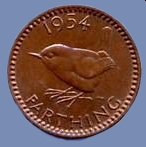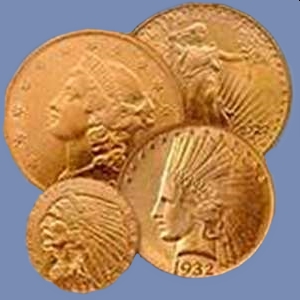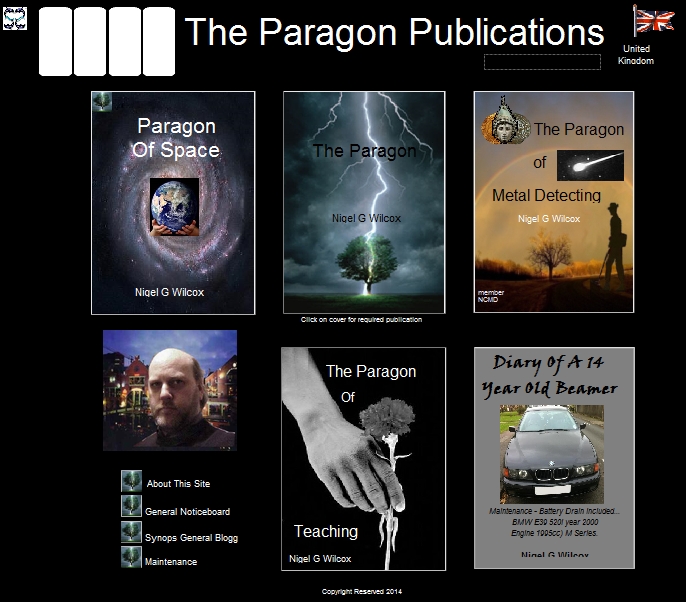








Designed by Nigel G Wilcox







The Paragon Of Metal Detecting
Member NCMD
Powered By Sispro1
British Sterling Currency - Numismatics,
Sixpence
For Reference ONLY
Everything For The Detectorist
Commonwealth 1625-1649 AD
Sterling Coin Menu
Royal Monarchy
Main Coin Index Menu
Copyright All Rights Reserved by Nigel G Wilcox E-Mail: ngwilcox100@gmail.com
INFORMATION - DATA
6. Menu
Pages
Introduction
Metal Detectors
Law
Insurance
Timelines
Reference
Identification
Site Map
MAIN

click
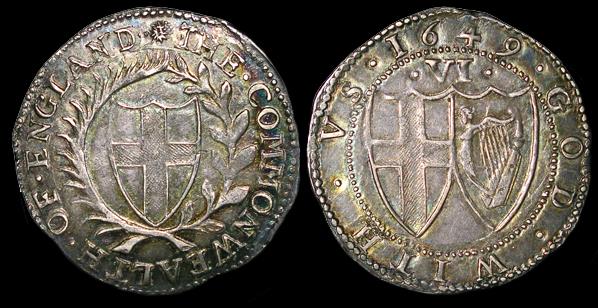

Estimated Value 3000t
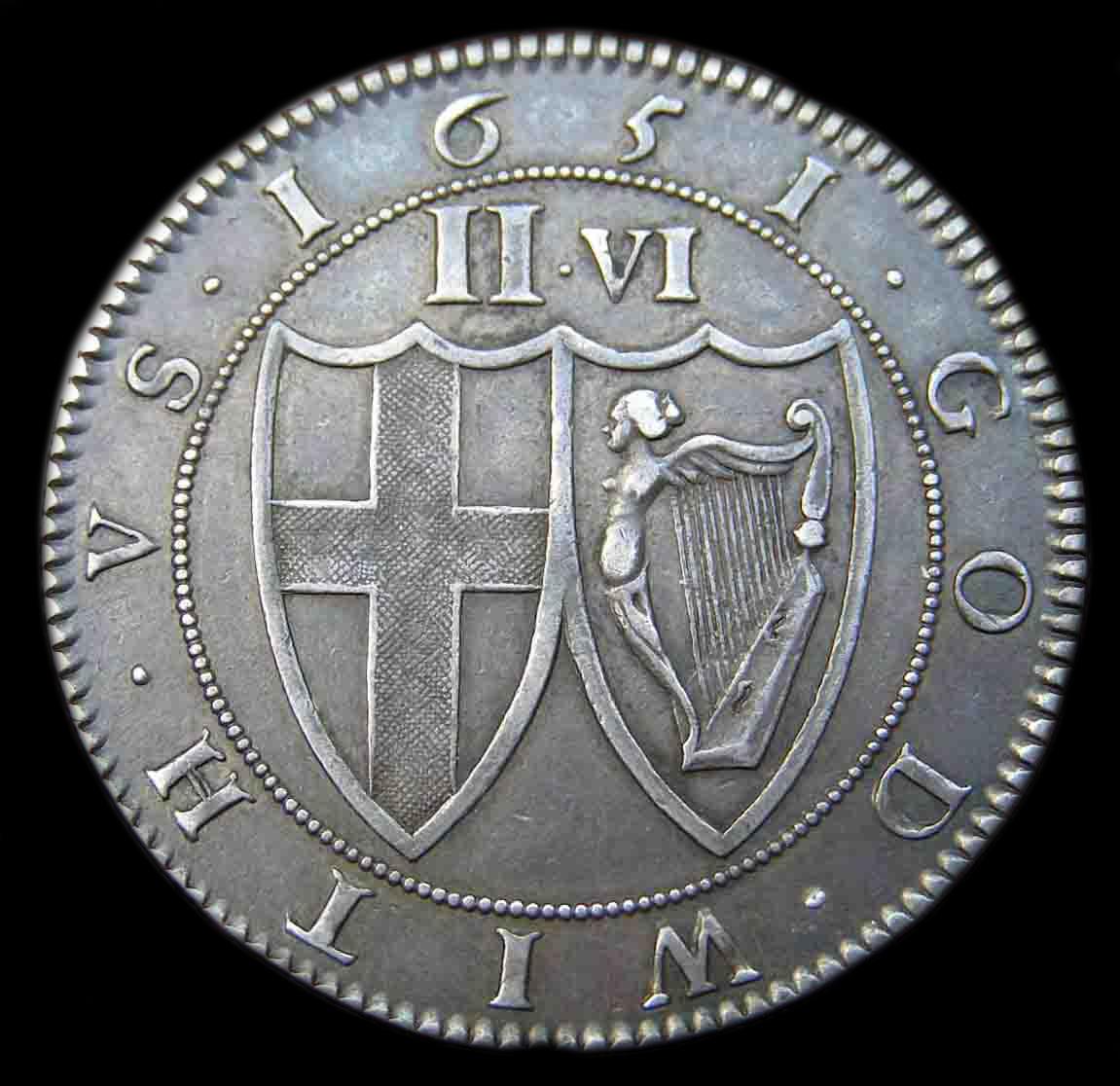
Sixpences were minted during the reign of every British monarch after Edward VI, as well as during the Commonwealth, with a vast number of variations and alterations over the years. During the reign of George II a number of issues were designed by John Sigismund Tanner, one time Chief Engraver of the Royal Mint, and it has been suggested that this is the origin of the nickname "tanner", which was a popular name for the coin until decimalisation. An alternative explanation for the nickname is that it comes from Angloromani word tawno meaning small thing.
During the beginning of Oliver Cromwell's Protectorship there was no portrait minted on the obverse - instead there is a wreathed shield featuring St George's Cross, surrounded by the inscription THE COMMONWEALTH OF ENGLAND. The reverse features the combined arms of England and Ireland, surrounded by the inscription GOD WITH VS. In 1656 the minting of milled coinage resumed, this time with the press of the Frenchman Peter Blondeau. The obverse of Cromwell's milled coinage features a portrait in the manner of a Roman emperor, surrounded by an inscription similar to those on the coins of earlier monarchs. Sometimes referred to as "breeches money" this type of late hammered coinage was minted in England after a period of civil war which culminated in the execution of King Charles I in London in 1649.
Hammered coins from this period bear no portrait of a king or queen for there was none. Instead there is a simple puritan design.
The reverse depicts co-joined shields of England and Ireland, with a date and the legend "GOD WITH VS". The obverse bears the legend "COMMONWEALTH OF ENGLAND" and a single shield in the centre with a mintmark, to complete the legend.
This period was also a time of innovation in minting coins. The traditional hammered technique for making coinage was coming under pressure from masters of forgery who made coins from de-based metals using crude home made dies and surface silvering from coin clipping - see Rogues Gallery on this website.
A solution was offered by Pierre Blondeau - milled coins - with edge writing. He was commissioned to prepare samples dated 1651 using his press. Although he completed this task, producing around 100 coins of extremely high quality the mint was not inclined to accept his innovation and fought to delay the introduction of his expensive technology.
In 1656, after repeated attempts, Pierre Blondeau persuaded Parliament to take up his new press techniques, and he was finally commissioned to make the "Cromwell Coinage" using dies made by Thomas Simon, with gold and silver supplied from the mint. These coins were made in limited numbers.
During 1657 there was a Trial of the Pix, where retained coins from the mint were tested for both weight and metal purity. The mintmark sun which had been the universal mintmark was changed after the trial to an anchor mintmark which was used for the remaining years 1658 to 1660.
Pierre Blondeau was to make one final series of Cromwell coins using dies supplied by Thomas Simon dated 1658. These milled coins were made in significant numbers but not without production problems. The Cromwell silver crown of 1658 is notable for a die crack in the lower half of the coin.
Oliver Cromwell died while Pierre Blondeau produced milled coins in 1658. In the remaining two years the mint reverted back to making hammered coinage which seems to have been produced in very small quantities with poor quality before the monarchy was restored in 1660.
Commonwealth (1649-60), bottom right image - silver Sixpence, 1658, 8 struck over 7, with D over retrograde D at end of obverse legend, English shield within laurel and palm branch, legends in English language, initial mark anchor, .THE. COMMONWEALTH. OF. ENGLAND., rev. English and Irish shields, value .VI. above, beaded circle and legend surrounding, date at top, legend surrounding, .GOD. WITH. VS., weight 3.01g. All Commonwealth period produced the first British coins to have legends in plain English.
Oliver Cromwell (25 April 1599 - 3 September 1658) was an English military and political leader and later Lord Protector of the Commonwealth of England, Scotland, and Ireland.
During the beginning of Oliver Cromwell's Protectorship there was no portrait minted on the obverse - instead there is a wreathed shield featuring St George's Cross, surrounded by the inscription THE COMMONWEALTH OF ENGLAND. The reverse features the combined arms of England and Ireland, surrounded by the inscription GOD WITH VS. In 1656 the minting of milled coinage resumed, this time with the press of the Frenchman Peter Blondeau. The obverse of Cromwell's milled coinage features a portrait in the manner of a Roman emperor, surrounded by an inscription similar to those on the coins of earlier monarchs. Sometimes referred to as "breeches money" this type of late hammered coinage was minted in England after a period of civil war which culminated in the execution of King Charles I in London in 1649.
Hammered coins from this period bear no portrait of a king or queen for there was none. Instead there is a simple puritan design.
The reverse depicts co-joined shields of England and Ireland, with a date and the legend "GOD WITH VS". The obverse bears the legend "COMMONWEALTH OF ENGLAND" and a single shield in the centre with a mintmark, to complete the legend.
This period was also a time of innovation in minting coins. The traditional hammered technique for making coinage was coming under pressure from masters of forgery who made coins from de-based metals using crude home made dies and surface silvering from coin clipping - see Rogues Gallery on this website.
A solution was offered by Pierre Blondeau - milled coins - with edge writing. He was commissioned to prepare samples dated 1651 using his press. Although he completed this task, producing around 100 coins of extremely high quality the mint was not inclined to accept his innovation and fought to delay the introduction of his expensive technology.
In 1656, after repeated attempts, Pierre Blondeau persuaded Parliament to take up his new press techniques, and he was finally commissioned to make the "Cromwell Coinage" using dies made by Thomas Simon, with gold and silver supplied from the mint. These coins were made in limited numbers.
During 1657 there was a Trial of the Pix, where retained coins from the mint were tested for both weight and metal purity. The mintmark sun which had been the universal mintmark was changed after the trial to an anchor mintmark which was used for the remaining years 1658 to 1660.
Pierre Blondeau was to make one final series of Cromwell coins using dies supplied by Thomas Simon dated 1658. These milled coins were made in significant numbers but not without production problems. The Cromwell silver crown of 1658 is notable for a die crack in the lower half of the coin.
Oliver Cromwell died while Pierre Blondeau produced milled coins in 1658. In the remaining two years the mint reverted back to making hammered coinage which seems to have been produced in very small quantities with poor quality before the monarchy was restored in 1660.
Commonwealth (1649-60), bottom right image - silver Sixpence, 1658, 8 struck over 7, with D over retrograde D at end of obverse legend, English shield within laurel and palm branch, legends in English language, initial mark anchor, .THE. COMMONWEALTH. OF. ENGLAND., rev. English and Irish shields, value .VI. above, beaded circle and legend surrounding, date at top, legend surrounding, .GOD. WITH. VS., weight 3.01g. All Commonwealth period produced the first British coins to have legends in plain English.
Oliver Cromwell (25 April 1599 - 3 September 1658) was an English military and political leader and later Lord Protector of the Commonwealth of England, Scotland, and Ireland.
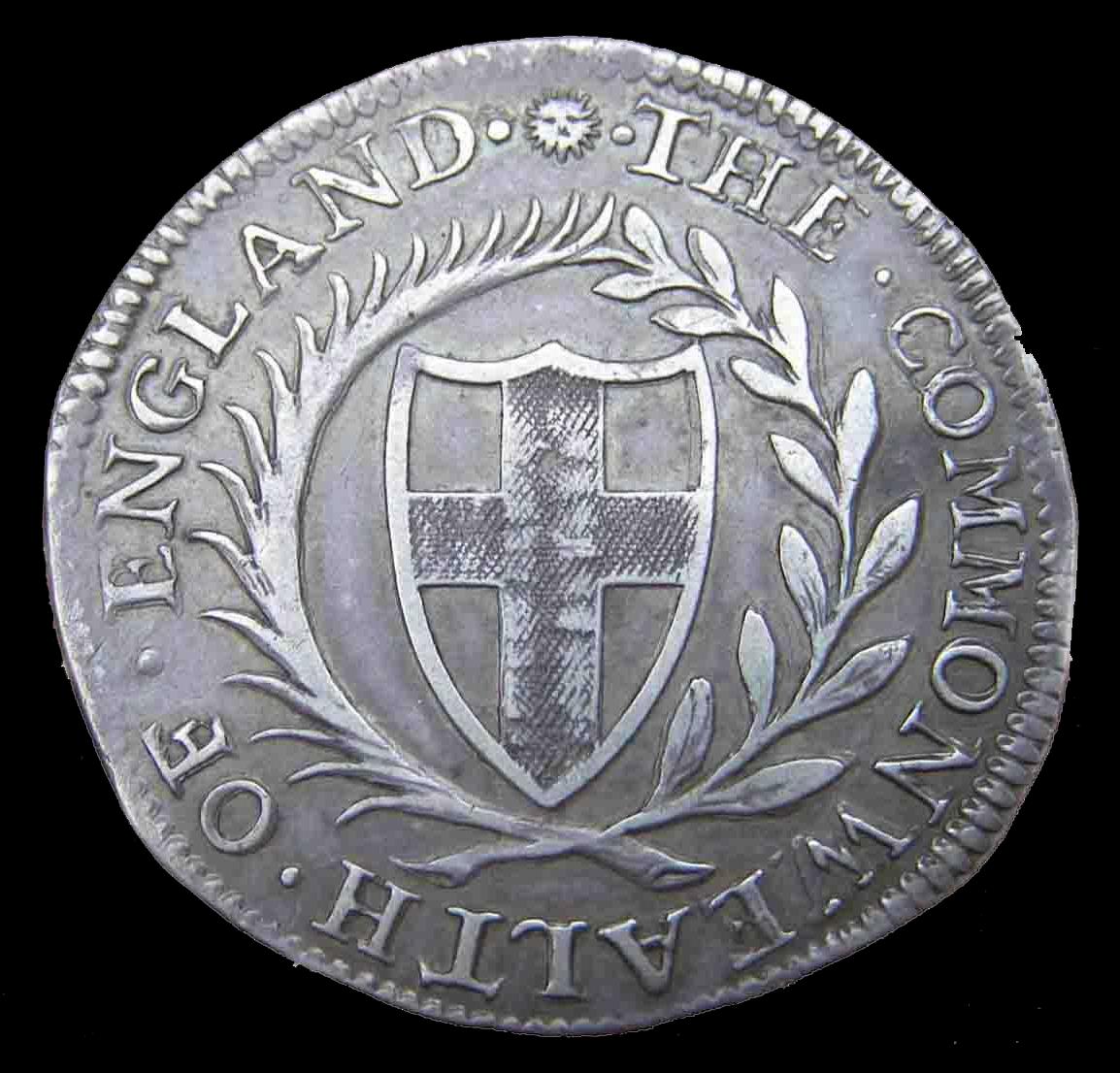
Sixpence
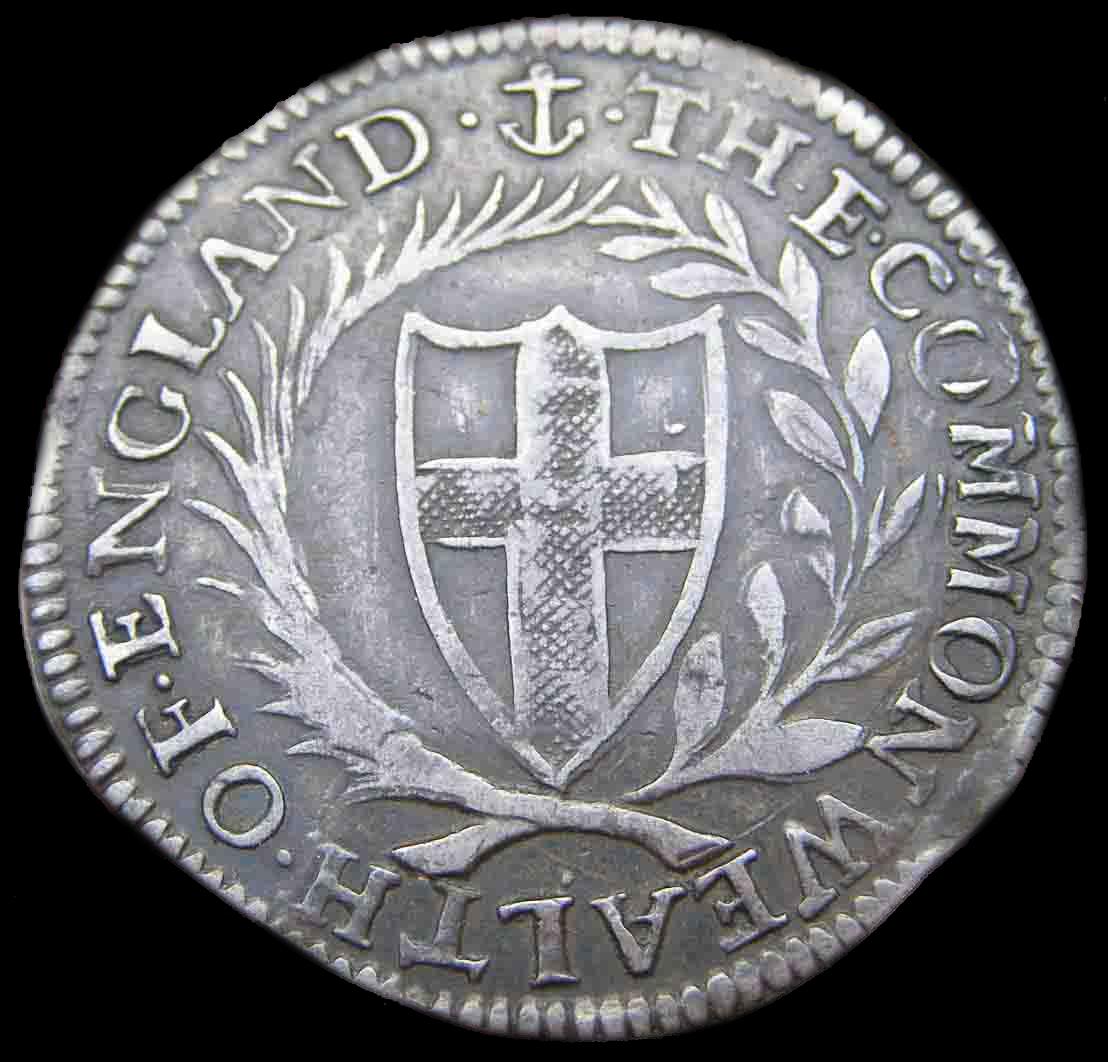
Note the Mint strike Anchor top centre compare with top image
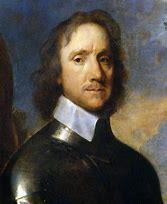
Cromwell - The Commonwealth
